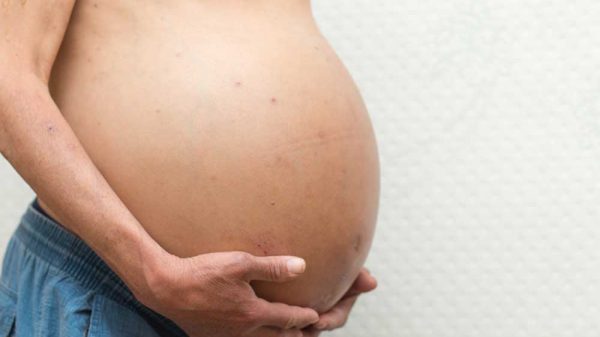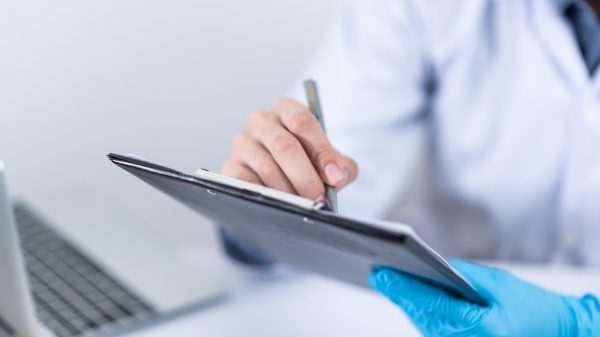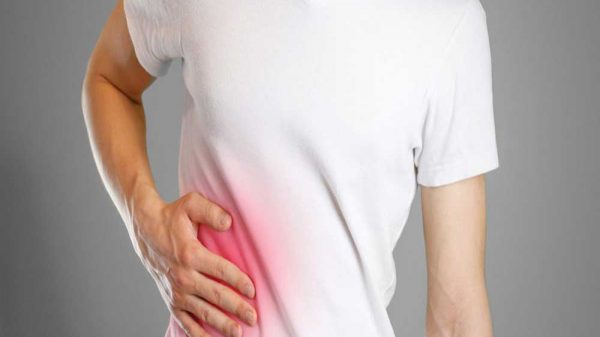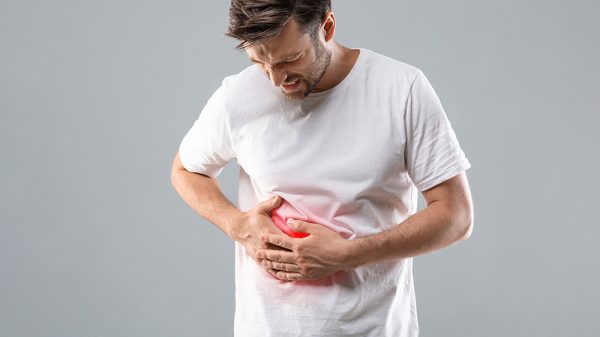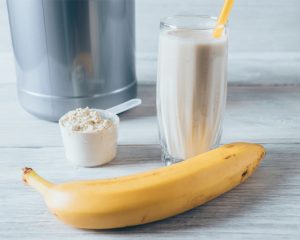Can the liver heal itself? If you have liver disease or liver damage, you may be wondering if the liver can heal on its own, and in fact, it can! Under many circumstances – though not all – the liver is able to repair itself.
Read on to find out what you need to know about how the liver heals itself and tips for supporting liver repair.
What to Know About Liver Regeneration and Repair
The liver is able to heal and repair in many different scenarios, but not all.
Of course, it’s also important to keep in mind that liver repair varies from person to person. It’s difficult to generalize all cases, and liver conditions should always be evaluated and carefully analyzed with a physician. Always follow all medical advice for treatment and care regimens for your liver.
When the Liver Can Repair Itself
In some cases, the liver is able to repair from damage with diet and lifestyle changes.
1. Early Stages of Nonalcoholic Fatty Liver Disease
Nonalcoholic fatty liver disease (NAFLD) is a condition characterized by fat accumulation within the liver. In many cases, NAFLD results from a combination of diet, lifestyle, and genetic factors. When NAFLD progresses, it can progress to more advanced conditions like nonalcoholic steatohepatitis or NASH, liver fibrosis, and liver cirrhosis. However, when caught in the early stages, NAFLD can be reversed with diet and lifestyle changes.
2. Early Stages of Alcoholic Fatty Liver Disease
Alcoholic fatty liver disease develops as a result of excess alcohol consumption. When we consume too much alcohol, the liver is flooded with alcohol that it must break down into nontoxic elements that the body can excrete. Drinking alcohol in excess over a long period of time leads to alcoholic fatty liver disease and significant inflammation in liver cells. In the early stages of alcoholic fatty liver disease, the liver responds readily to the cessation of alcohol use.
3. Steatohepatitis
Steatohepatitis describes the inflammation of the liver as a result of progressed NAFLD or alcoholic fatty liver disease. Because steatohepatitis is a more advanced form of active inflammation, it can be harder to reverse than the earlier stages of fatty liver disease. However, with diet and lifestyle changes, steatohepatitis can resolve.
4. After a Liver Transplant
Can you live without a liver? Because it’s impossible to live without a liver, severely diseased livers that have lost all function must be treated with a liver transplant. A liver transplant occurs when your diseased liver is surgically removed and replaced with healthy liver tissue from a donor.
Amazingly, when the liver is replaced with healthy tissue, the healthy liver section can often regenerate and grow to reach normal liver size.
When the Liver Can’t Repair Itself
In certain circumstances, the liver has a much more difficult time repairing by itself. Here we’ve outlined a few cases in which liver disease and liver damage require serious medical intervention to restore function.
1. Advanced Liver Cirrhosis
Liver cirrhosis occurs as a result of continued fibrosis, which describes the development of scar tissue in the liver. A cirrhotic liver is characterized by the excessive accumulation of scar tissue that impedes healthy liver function. Common causes of liver cirrhosis include NAFLD, NASH, and alcoholic hepatitis. Though certain interventions may help halt the process that causes scarring of the liver, it is difficult for the body to remove scar tissue that has already formed.
2. End-Stage Liver Disease
End stage liver disease describes the latest liver disease stages in which liver function has diminished almost completely. End stage liver disease may result from very advanced liver conditions like cirrhosis of the liver or stage 4 liver cancer. End stage liver disease may ultimately result in liver failure and require a liver transplant.
3. Hepatitis C
It is possible for hepatitis C to resolve on its own. However, this is not common. Usually, hepatitis C requires medical intervention with antiviral medications to clear the infection. Once the infection is gone, the body can get to work on the repair process. Other viral infections affecting the liver like hepatitis a and hepatitis b may also require medical intervention.
4. Liver Cancer
Liver cancer does not resolve on its own and usually requires aggressive medical treatments to manage. Liver cancer usually develops in the form of hepatocellular carcinoma, which results in cancerous growths in the liver. Over time, liver cancer can cause hepatic impairment and compromise liver function significantly. It may also metastasize to other organs.
Signs and Symptoms of Liver Disease
Early stages of liver disease may be completely asymptomatic, and you may only find out you have a liver condition when you visit the doctor. If you are symptomatic, you may experience:
- Loss of appetite
- Fatigue
- Pain in the upper right quadrant of the abdomen, where the liver is located
- Digestive discomfort
Later stages of liver disease are accompanied by more severe symptoms. Possible symptoms of advanced liver disease include:
- Ascites, or swelling of the abdomen
- Swelling or edema in the legs
- Jaundice, or yellowing of the skin
- Muscle wasting and weakness
- Itching
- Hepatic encephalopathy and associated symptoms like confusion, personality changes, and seizures
Diagnosing Liver Disease
Keep in mind that it’s impossible to know if you have liver disease without an examination and diagnosis from a doctor. So, how is liver disease diagnosed?
One of the first signs of liver damage is elevated liver enzymes on a routine blood test. It is common to see elevated levels of alkaline phosphatase (ALP) or aspartate aminotransferase (AST) on a blood test. A physician will also listen to any symptoms you have and may also conduct a physical exam and notice that your liver is a little more enlarged or inflamed. If your general practitioner suspects that liver disease is present, you will be referred to a radiologist and hepatologist for further testing.
Imaging is a significant tool used for detecting and diagnosing liver conditions. Technologies like ultrasound, magnetic resonance imaging (MRI) scans, and computed tomography (CT) scans. These imaging techniques can detect the presence of abnormal growths and fat particles in the liver.
To confirm the diagnosis, your health care provider may order a liver biopsy. A liver biopsy requires taking a tiny sample of liver tissue and examining it for abnormalities, such as fat buildup, inflammation, and damage. A liver biopsy is one of the most accurate methods for diagnosing liver conditions.
3 Things That Make a Big Difference in Supporting Liver Health
Because liver regeneration is possible and the liver is a highly adaptive organ, diet and lifestyle changes can make a big difference in supporting liver healing and repair. Here are a few key steps you can take to help your liver heal itself.
1. Eating an Anti-Inflammatory Diet
The foods you eat are significant determiners in your liver’s ability to repair damage and disease. Eating foods rich in anti-inflammatory and antioxidant agents helps strengthen the immune system, lowers oxidative damage, and reduces systemic inflammation.
So, what does an anti-inflammatory diet look like? An anti-inflammatory diet is rich in foods like fruits and veggies, whole grains, nuts, seeds, low-fat dairy, lean meats, and fatty fish.
Fruits and veggies offer plenty of micronutrients like vitamins, minerals, and antioxidants. These micronutrients have positive impacts on cellular mechanisms and neutralize free radicals. When the liver is less inflamed, it is able to repair more readily.
Whole grains, as well as fresh produce, offer an abundance of dietary fiber. Eating lots of fiber supports the growth of healthy bacteria in the digestive system. When the microbiome of the gut is balanced, the good bacteria produce anti-inflammatory byproducts that travel through the bloodstream and reduce inflammation in the liver.
Fatty fish, nuts, and seeds are packed with healthy fats, particularly polyunsaturated fats like omega-3 fatty acids. Omega-3 fatty acids are known for their potent anti-inflammatory effects on several organ systems, including the liver. Fatty fish like salmon, mackerel, and sardines are rich in eicosapentaenoic acid (EPA) and docosahexaenoic acid (DHA). Walnuts, pecans, chia seeds, and flaxseeds are rich in the omega-3 fatty acid called alpha-linolenic acid (ALA).
Essential amino acids are another component that is crucial for supporting liver repair. Amino acids are the smallest individual units of protein and can be obtained from dietary protein sources like fish, lean meats, and dairy. Essential amino acids are particularly important for biological functions, including muscle synthesis, metabolic processes, and immune function. Getting optimal ratios of essential amino acids is also important for protecting the liver from inflammatory functions and encouraging healthy cellular mechanisms in the liver.
What foods should you avoid on an anti-inflammatory diet? When following an anti-inflammatory diet for liver health, it’s crucial to steer clear of foods like refined grains, sweets, fatty cuts of meat, and fatty dairy products. The high consumption of sugars and saturated fat contributes to metabolic dysfunction and is associated with high blood pressure, high cholesterol, insulin resistance, type 2 diabetes, and fatty liver disease.
2. Eliminating Alcohol
Individuals who drink alcohol in excess may experience liver damage. For example, heavy drinkers are at a high risk of developing alcoholic fatty liver disease and alcohol-related cirrhosis. The amount of alcohol you consume has a significant impact on liver health. Chronic heavy drinking floods the liver with toxins, requiring the liver to metabolize ethanol and producing inflammatory acetaldehyde and free radicals as byproducts. Binge drinking is also associated with inflammation in the liver. Eliminating alcohol is an important part of a liver-friendly diet and lifestyle because it allows your liver to clear free radicals and repair.
Individuals with alcohol-related liver disease usually have a physical and psychological dependence on alcohol, making it challenging to quit. If you feel like you are addicted to alcohol and can’t stop drinking, reach out to an addiction specialist, your doctor, or a mental health counselor. These health professionals can provide resources and support for helping you manage alcohol abuse disorder and alcohol addiction.
In addition to eliminating alcohol, it’s also a good idea to eliminate medications that are difficult for the liver to process, such as acetaminophen or Tylenol.
3. Weight Loss and Healthy Body Composition
Obesity and being overweight are risk factors for developing NAFLD, which is one of the most common liver diseases in the United States. NAFLD is linked to metabolic syndrome, which is exacerbated by excess adipose tissue that causes systemic inflammation.
Sometimes, simply losing weight can be sufficient for clearing NAFLD completely. Both an anti-inflammatory diet and eliminating alcohol are helpful strategies for kick-starting weight loss. It’s also important to make sure that you’re consuming an appropriate number of calories for your height, age, and activity level.
When striving to lose weight, a calorie deficit will ensure that you’re burning more calories than you consume, leading to weight loss. Increasing your physical activity, building muscle mass, and losing fat will help you maintain a healthy body composition that combats the symptoms of liver disease and metabolic syndrome.
Things to Keep in Mind
If you suspect that you have liver disease, it’s always important to check in with your doctor and get the proper diagnosis. Your physician will be able to determine the cause of your liver condition and recommend medical interventions for managing your disease. Always make sure that you discuss all supplements and diet changes with your physician.
Conclusion: Can the Liver Heal Itself
The bottom line is that the liver can heal itself, though it depends on the type of liver damage present and the individual’s biochemistry. The liver can more easily heal from the early stages of NAFLD, alcoholic liver disease, and NASH. Liver regeneration is also possible after a successful liver transplant. Later stages of liver disease accompanied by more damage and scarring can make it difficult for the liver to heal itself completely. Eliminating alcohol, eating a healthy diet, and losing weight can help your liver heal or slow the progression of disease.

